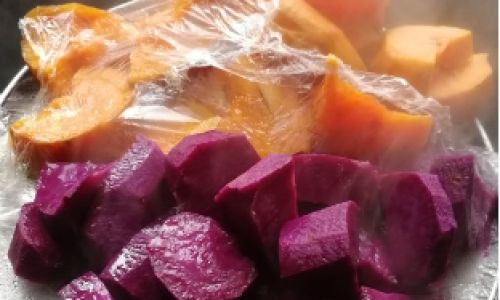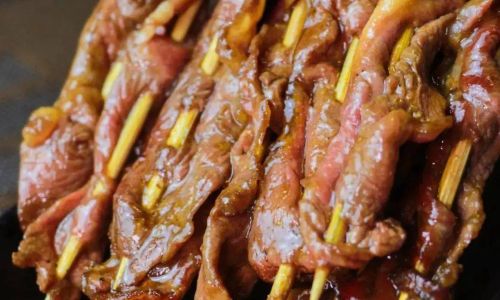In the realm of Asian desserts, taro balls, or yuanyin as they are affectionately known, occupy a special place. These chewy, sweet morsels made from taro root starch and other ingredients are a staple in Taiwanese, Chinese, and Southeast Asian cuisines. Their soft texture and versatility in flavorings make them a beloved treat, often enjoyed as a dessert soup or paired with ice cream and syrups. However, one common challenge that home cooks and even seasoned chefs face is how to prevent boiled taro balls from hardening over time. This article delves into the intricacies of preparing and maintaining the perfect softness of taro balls, ensuring they remain a delight from the first bite to the last.

Understanding the Science Behind Soft Taro Balls
To keep taro balls soft, it’s crucial to first understand the science behind their texture. Taro balls are primarily made from taro root starch, which, when mixed with water and cooked, forms a gel-like structure. This gel structure is what gives taro balls their characteristic chewiness. However, this gel can be susceptible to changes in moisture content and temperature, leading to hardening if not handled properly.
Selecting the Right Ingredients
High-Quality Taro Root Starch:
The foundation of soft taro balls lies in the quality of the taro root starch used. Opt for starch derived from fresh, mature taro roots. Avoid using stale or low-quality starch, as it can result in a denser, less elastic texture.
Water Ratio:
The ratio of water to taro root starch is critical. Too much water can make the dough too sticky and difficult to shape, while too little will result in a dry, crumbly texture. A general guideline is to use approximately 1.5 parts water to 1 part taro root starch, but this may vary slightly depending on the specific starch and desired consistency.
Sweeteners and Flavorings:
While not directly affecting the texture, the choice of sweeteners and flavorings can enhance the overall eating experience. Honey, brown sugar, or cane sugar can add natural sweetness without compromising the texture. Incorporating ingredients like pandan leaves or coconut milk can also add layers of flavor without making the taro balls tough.

The Art of Preparation
Mixing and Kneading:
Begin by mixing the taro root starch with water in a large bowl. Use a spatula or wooden spoon to combine until a rough dough forms. Transfer the dough onto a lightly floured surface and knead until it becomes smooth and elastic. This process helps develop the gluten network within the dough, contributing to its chewy texture.
Shaping the Balls:
Divide the dough into small portions and roll each into a ball. Ensure the balls are uniform in size to ensure even cooking. Lightly dusting your hands and the work surface with a bit of extra starch can prevent sticking.
Boiling Techniques:
Bring a large pot of water to a gentle boil. Avoid using rapidly boiling water, which can cause the outer layer of the taro balls to set too quickly, trapping air bubbles inside and leading to a gummy texture. Gently drop the balls into the water and cook until they float to the surface. This usually takes around 3-5 minutes. Once they float, continue cooking for another 1-2 minutes to ensure they are fully cooked through.
Maintaining Softness After Cooking
Icing Water Bath:
Once cooked, immediately transfer the taro balls to an ice water bath. This rapid cooling stops the cooking process and helps set the outer layer, preventing it from becoming overly soft and sticky. It also helps to retain moisture, keeping the balls soft and chewy.

Storing Properly:
If you’re not serving the taro balls immediately, store them in a container with a lid, lined with a damp paper towel to maintain moisture. Avoid refrigerating them for extended periods, as this can cause them to harden. Instead, keep them at room temperature for up to 2 hours or reheat gently in a microwave or steam bath before serving.
Avoiding Direct Heat:
When reheating, avoid using direct heat sources like stovetops or ovens, which can quickly dry out the taro balls. Opt for steaming or microwaving on low power, stirring occasionally to ensure even heating.
Creative Serving Suggestions
To keep taro balls interesting, experiment with different toppings and serving styles. A classic approach is to serve them in a bowl of ice-cold syrup, perhaps infused with ginger or lemon. They can also be paired with creamy coconut milk or served warm with a drizzle of honey. For a tropical twist, add mango puree or passionfruit seeds.
Conclusion
Mastering the art of keeping boiled taro balls soft is a blend of science and creativity. By understanding the ingredients, meticulously preparing the dough, and carefully managing the cooking and storage processes, you can ensure that your taro balls remain delightfully soft and chewy from the moment they’re served until the last bite. With a bit of practice and a love for experimentation, you’ll soon be crafting taro balls that rival even the most renowned dessert shops. So, gather your ingredients, roll up your sleeves, and embark on a culinary journey that will delight your taste buds and impress your guests. Happy cooking!







0 comments